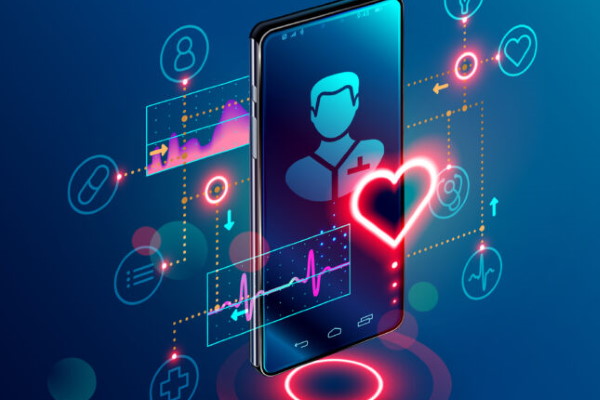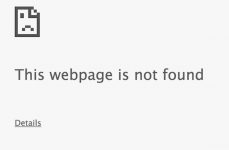Published on the 13/12/2021 | Written by Heather Wright

Putting Kiwis in control of health data – and giving developers new opportunities…
The first release of an ambitious new health system which the Ministry of Health claims will put Kiwis in control of their health data and lay the foundations for a digitally enabled health system, is due to live in May 2022.
Funding for the first tranche of work for Hira – previously called the National Health Information Platform (nHip) – was approved by government in October.
The ‘digital health eco-system’ will create a marketplace of apps, drawing together a person’s health data from trusted sources to create a virtual electronic health record using APIs, with the Ministry of Health saying it’s looking to the tech innovation sector to create apps for the marketplace.
“We want to see the market support innovation, provide value for money from a health system perspective but we also want to see a level playing field.”
Darren Douglass, Ministry of Health GM digital strategy and investment and Hira programme director, says the system will empower Kiwis to better manage their health and wellbeing by putting them in control of their own health information, enabling them to be a partner in decisions on their care and enabling them to delegate, or authorise, access to others involved in their care, whether family or other services provides.
“It also ensures that providers have easy and secure access to patient information in the right context and at the right time, and provides visibility of who is working with a consumer.”
Hira is also expected to improve the quality and timeliness of analytics, with Douglass noting the sector is ‘data rich but insights poor’ with plenty of data, fragmented across many systems and a lack of uniform adoption of standards plaguing the sector.
The system won’t be a single, centralised all-in-one technology solution. Instead, Douglass says it will be an ecosystem of multiple solutions and technologies, with a market of interoperable services.
“We aren’t going to market looking for a single vendor to deliver this solution,” he says.
“Hira outcomes will be delivered by multiple sources of data, multiple solutions, multiple technologies that are all able to work together to deliver what individual stakeholders need.”
Douglass uses the analogy of a car’s GPS system.
“You enter the location you want to go to and the app or GPS unit will suggest a route to get there, tell you when you can expect to arrive, the speed limits of the roads you’re driving on, where you might want to stop for petrol, accomodation, coffee or to have a break. You can look up reviews from people who have been there before and it will be constantly adjusting of arrival based on road and weather conditions.
“None of the data that drives that user experience was created for the purpose of a maps app on a phone or a GPS unit in a car. None of the data exists in one place, it’s federated and the user experience you get differs from the user experience someone else might use if they’re using a different GPS unit or app, for example.
“It’s using data from multiple sources to create this seamless user experience that delivers to the person something they need at that point in time.
“Imagine if we could do that with health data. That’s what Hira is trying to do.”
Developing for the future
It’s an approach Douglass says will not be about the Ministry delivering solutions, but instead looking at the problems that need to be solved and trying to join up providers and technology vendors to help solve those problems.
“As much as possible we want the market and the sector to be delivering new services for us.”
“It will not be ignoring those great solutions that exist out there now,” Douglass says. But where solutions don’t already exist the Ministry will be looking for the market to fill the gaps.
“We welcome the market creating services that can be brought into that Hira ecosystem, so we are not trying to create them all from the centre. We really want to be able to enable choice. We recognise that what works for one person doesn’t necessarily work for another.”
He admits it will require changes in thinking for the Ministry, including in how they handle vendor partnering and relationships.
“At the moment in the health sector we quite often tend to procure, establish a contract, implement and then things drop into just a support and maintenance mode and digital services, you want those services to continue growing, evolving and improving.
“In order to do that we need a far more active approach to vendor partnering and vendor management,” he says.
“We want to see the market support innovation, provide value for money from a health system perspective but we also want to see a level playing field and today, arguably we don’t have that level playing field.”
Peter Marks, Hira technical director, says his goal is that over time the marketplace will become synonymous with digital health services similar to TradeMe be synonymous with buying.
“It will be the central place where you come to find what is available in the New Zealand health system for digital services,” Marks says.
Developer portals will provide access for developers to the digital services that can be incorporated into their apps and solutions.
“There will not be one developer portal to rule them all. Nor do we want one to rule them all.”
Marks says there will be multiple players in the marketplace, including ‘integrators’ who are already likely delivering services to the sector already, and ‘innovators’ who are used to delivering digital services, but don’t do so in health yet.
Data suppliers – agencies who are custodians of health data – and third party providers of things such as location services or other algorithms – are also part of the wider package.
All players will need to be certified, with Marks saying the Ministry is aiming to ensure certification ‘won’t be too onerous’, though rigour will be based on the sensitivity of data and use cases. Apps using public domain, non-PII information are likely to have ‘a lightweight process to support that both from a certification and onboarding perspective’. Those using sensitive, personal PII will have ‘much greater rigour’.
Douglass says security will be built in from the beginning.
“We will have specialist privacy and security resources and partners engaged through Hira. We will have a certification process for access to these services that is overseen by a data governance board and advised by a critical reference group.
“Importantly, New Zealanders will be able to see where health information is held about them and who is authorised to access their data and they need to be confident we are not providing access to people who shouldn’t have it.”
The system will leverage work done for Covid, including My Health account capabilities, for digital identity.
“It gives us a really good start from a consumer identity point of view and we will be looking to leverage and extend on that.”
The project will be delivered iteratively in three tranches, with tranche three arriving in late 2026.
Over the next six months, Douglass says the Ministry will be standing up its marketplace and developer portal, targeting initial data services.
Oh, and in case you’re wondering, Hira isn’t an acronym. Instead it’s Maori for ‘to have a significant bearing on future events; a widespread effect’.



























